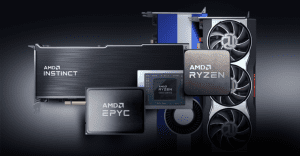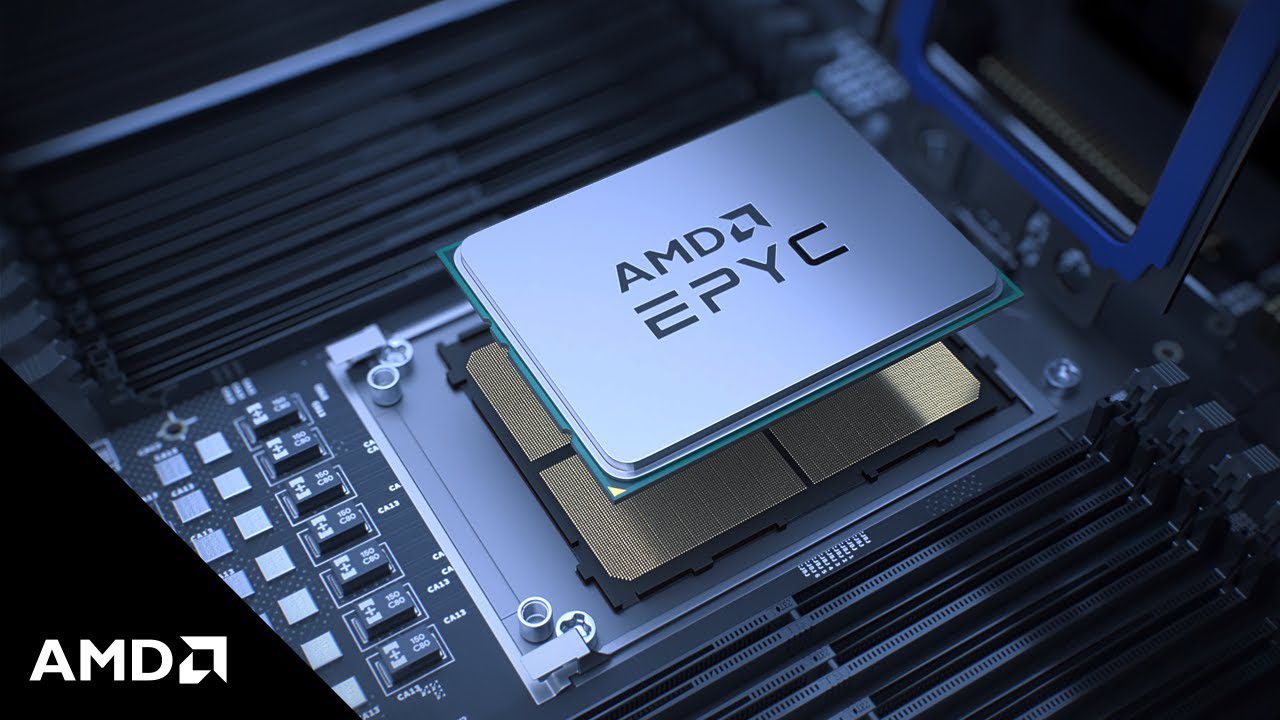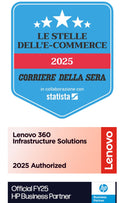AMD semiconductors and CPUs. From California to the world
One in four computers in the world is based on a CPU produced by AMD , a percentage that rises considerably if we consider video cards. An overwhelming success, but how did it all begin?
When friendship becomes business, AMD is born
AMD stands for Advanced Micro Processors and was created on May 1, 1969 in Santa Clara, California. Not just one man in command but a team, led by Jerry Sanders and seven of his friends.
Since its inception, AMD has shared many details and similarities with the company of which it will be a lifelong competitor, Intel . The two companies were in fact founded just one year apart, for a business path that will intertwine many times during their journey.
AMD's business began thanks to a customer that collected almost all of its production, the US army, which chose AMD as its second supplier after Fairchild Semiconductors. This company is also the second connection to Intel , as many of the employees of both come from Fairchild.
After a few years AMD decided to enter the market directly, it did so in 1975 by presenting its first AMD-branded RAM memory, the Am9102.
Even in this case the success is notable and rapid and leads AMD to make the first of many agreements with Intel . We are in fact in 1976, when AMD stipulates an agreement for the licensing rights on Intel microcode; the agreement is preparatory to the supply of microprocessors for IBM computers . In fact, it is the same company that requests Intel to introduce a second supplier, with the aim of guaranteeing the necessary production and any alternative, in a supplier selection process that is quite common in the United States.
This agreement led to the immediate creation of the AMD8080, AMD's first microprocessor, created along the lines of Intel's product. The success is immediate and leads to an increase in production of 60% per year. The increase in production led to an explosion in AMD's turnover which in 1980 led it to become a competitor on equal terms with Intel .
The long-distance challenge will continue throughout the 1980s and will even end up in courtrooms.
Explosive growth and court cases
The 90s saw continuous growth for AMD which began to differentiate its production by no longer dealing only with microprocessors. CPUs are still fundamental to the brand and this is demonstrated by the launch of the Am386 and Am486 family of processors, but in addition to these, many investments are also allocated to memories, especially Eprom, EEprom and Flash.
AMD's market innovation in this specific niche is concentrated on the miniaturization of components, which leads AMD to become the undisputed leader in the sector.
The brand also tries to become the undisputed leader of the CPU market, but in this area the clash with Intel becomes evident, with the two brands ending up in court for a possible patent violation. The clash is related to the agreement stipulated in 1976, which is interpreted in a diametrically opposite manner by the two brands:
This first match will see the victory of AMD, which will therefore present the AMD386 clone at a cheaper price than the similar one sold by Intel.
The market will greatly appreciate this choice, rewarding AMD's sales, up to doubling its turnover and bringing AMD to Intel's level.
K-5 and its derivatives
AMD, thanks to its successes, decides that it is time to proceed "with its own legs". He then created his first line of microprocessors developed directly from scratch. This new series represents a new level of awareness for the Californian brand. A line that will not achieve the success of the previous series, but which will still give further value to the brand.
The evolution of the K-6
The moderate success of the first series led to the release of its evolution, creating the K6 series which would then evolve into K6-II and K6-III. The development of the K series will then lead to the creation of the Athlon family, which will compete with the Pentium series. The K-6 series will also be the first to land on the notebook market. For laptops , AMD creates a distinction starting from the K-6 series, adding the suffix + to it.
The Advanced Micro Processors laboratories proved to be crucial in this phase for the evolution of the brand, creating the first chipset (the AMD-760) with support for DDR memories.
The 2000s
The new millennium opens for AMD with a technical record. The Athlon processor surpasses the then incredible wall of the 1 Ghz clock threshold for the first time in history. However, the evolutionary process does not only occur for CPUs, but involves all AMD's technical divisions.
In recent years AMD has in fact presented many new products, which lead it to compete in various sectors:
Pioneers of 64-bit
AMD's evolution obviously also focuses on CPUs, with the brand creating the first 64-bit microprocessors, in single and multicore versions. In fact, since 2005 the renowned Opteron, Athlon 64, Athlon 64FX and Sempron series have been released. The brand's innovation is continuous and it is starting to evaluate the possibility of making "strategic" acquisitions.
In fact, in 2006 AMD proceeded with the purchase of ATI Technologies at one of the highest costs in history, for a price exceeding 5 billion dollars and which would be the subject of controversy and problems, given the overvaluation given by the Californian company to the manufacturing brand of video cards.
This acquisition allows AMD to challenge the giants of the sector, being the first to present a new platform called Spider. This solution is the first in history in which a single manufacturer provides for the supply and production of each of the parts.
Spider is in fact made up of:
AMD present
Inundated with lawsuits from Intel and criticism for the purchase of Ati Technologies at an out-of-market value, AMD entered the first decade of the 2000s into a recessionary cycle from which it seems to be really struggling to escape. He succeeded only in 2004, when, on a financial level, companies from the United Arab Emirates entered the capital and on a technical level, when a change occurred in the role of the CEO, with the entry of Dr. Lisa Su.
The relaunch
AMD then heavily developed its business in the sector of CPUs produced to other people's designs, becoming the supplier of Microsoft and Sony and the related game consoles.
Strengthened by this further injection of capital, AMD presents a new series of CPUs, available in two different solutions, those for Ryzen computers and those for Epyc servers. Together with the new CPUs, the Zen architecture was also launched which allows up to the incredible (for the period) 8 cores and 16 threads.
The relaunch also takes place with regards to graphics cards, with AMD aiming to undermine Nvidia's dominance thanks to the Vega architecture, a multifaceted solution that is used in both the desktop and mobile sectors.
The challenge to Intel
The challenge to Intel does not only take place through Ryzen, but also through a continuous technological evolution that leads AMD to set two new records:
The challenge is obviously not over yet and involves new interesting overtaking and competition between the two brands.
History of AMD processors
It all starts with the Am386 processor, the first product in this category made by AMD.
On the market since the 90s, this processor is the clone of the one produced by Intel. Born to become IBM's second supplier behind Intel itself, this product became a copy of the original and was then also developed and produced for other customers and markets.
The evolution of this processor has been continuous, quickly leading to the creation of the Am486 series and the subsequent Am5x86.
K Series
A few years later, starting in 1995, AMD created the new series of processors called K. This successful series includes the K5, the K6 (available in two different versions) and the K7.
This last series will then lose the exclusively numerical connotation to add a name to each different family of processors. In fact, the Athlon, Athlon XP, Duron, Sempron and Opteron are K7 processors.
64-bit series
Starting from 2006, AMD introduces its first 64 Bit series onto the market. Part of the K8 family, we find in this series the Athlon 64, the Athlon 64FX, the Athlon 64 X2 and the Sempron family of processors.
The first processors specifically dedicated to mobile devices also appear, such as the Mobile Athlon 64 and the Mobile Sempron.
K10 family
The K10 family launched around 2010 sees the release of a new series of processors, reinterpretations of previous models or totally new products, such as the Opteron, the Phenom, the Athlon X2 and the new Sempron series.
The processors currently on the market will then derive from this family, forming part of the Bobcat, Bulldozer, Jaguar and Zen families.
AMD, not just processors 
Over the years, AMD has not only dealt with processors and graphics cards. The engineering skills of this group have also been dedicated to graphics acceleration systems for the gaming industry and software solutions to make the components produced by the brand itself perform at their best.
Even returning to the processor sector, AMD's supply really covers many sectors, from the consolidated ones of game consoles (PlayStation and xBox) to the innovative and rapidly growing ones of electrically powered cars (collaboration with Tesla).
AMD computer processors currently on the market
AMD's offering in the processor field differs in two types. The first is that of the sector to which they are dedicated, the second for the type of application.
Let's see them:
Chromebook processors
AMD has created a specific series of processors for this type of ultra-portable notebook. The processors designed for Chromebooks are AMD Ryzen (series 3, 5, 7) and the Athlon series (Silver and Gold).
Laptop Processors
Even in the field of portable computers, AMD has differentiated its proposal by type of use. In fact, we find the Ryzen PRO Mobile series for advanced business applications, the Ryzen Mobile series for standard business needs and an Athlon series for economical laptops , perfect for users who do not have advanced needs.
Workstation Processors
When you need computing power, AMD certainly doesn't hold back. This brand has in fact created a series of processors specifically created for the top-level needs of this market. Available in two different versions, AMD Ryzen Threadripper and AMD Ryzen Threadripper PRO, these two families of processors handle even the most demanding computational demands.
Server Processors
AMD is also active in the field of server processors, a sector in which it combines its hardware capabilities with those of programming, thanks to the possibility of offering "hybrids" composed of hardware and a cloud part.
This series includes AMD Epyc processors that can be "enhanced" with Cloud Computing solutions and packages dedicated to database management and virtualization solutions.
Desktop Computer Processors
Original family of processors, even in the desktop computer sector, AMD has always updated and extended its proposal, also linking it, in many cases, to the graphics one, thanks to the purchase of ATI. In fact, we find computers dedicated to demanding performance, with AMD Ryzen PRO processors and machines for more "office" uses with the Ryzen and Ryzen series with Radeon graphics.
AMD, fifty years and not hearing them
More than 50 years have passed since the creation of AMD, but this company still remains young and very active from the point of view of research and innovation. After overcoming a crisis in the early 2000s, AMD has relaunched itself and appears ready to once again battle Intel for dominance of the CPU world.











